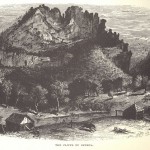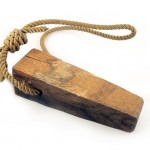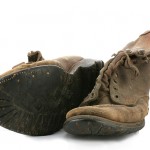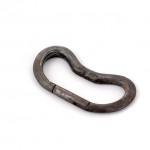When climbing began at Seneca there were no instructors, guidebooks, major gear manufactures, indoor gyms or safety nets. The rules were few and the objective simple: reach the summit and come home in one piece.
While it is possible that American Indians and early American settlers living around Seneca climbed to its summit, there is no evidence to suggest who may have done so or when. A now illegible inscription – “D.B. [or possibly D.H.] Sept. 16, 1908” – marks the first recorded ascent. There is speculation that these initials were carved by either a surveyor, Donald Bittinger, or local business owner Delmar Harper.
The first documented roped ascent was by Paul Bradt, Don Hubbard and Sam Moore in the spring of 1939. The three climbers ascended the south peak via the routes Lower Skyline Direct, Skyline Traverse, Cockscomb Chimney, and Windy Corner. The expedition took two days and was accomplished with only three carabiners, a handful of pitons, hiking boots and a thick hemp rope tied around their waist.
Protected by a hip belay, the lead climber hammered pitons into judiciously chosen cracks. The brittle hemp rope was clipped to the pitons with a carabiner that only provided nominal protection in the event of a fall. Because hemp rope was susceptible to breakage and gave dangerously harsh catches, falls were avoided at all costs.
Bradt, Hubbard and Moore are also credited with the first ascent of the iconic Gendarme. The three ascended the precariously thin spindle by lassoing the pinnacle and top roping to its summit.





